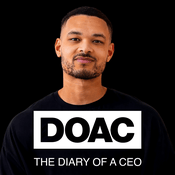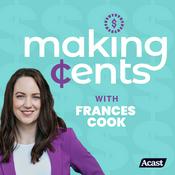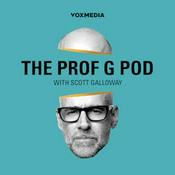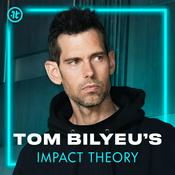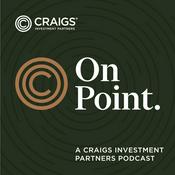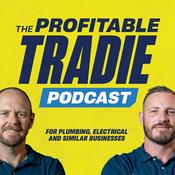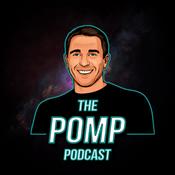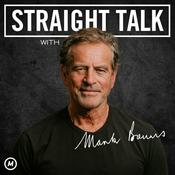134 episodes
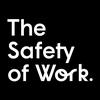
Ep. 133: How do policies and metrics shape the outcome of investigations?
23/11/2025 | 51 mins.
The discussion explores three critical constraint categories: structural elements like mandatory timelines, organizational factors including resource capacity, and relational dynamics affecting investigator access to information. Drawing parallels beyond healthcare, they challenge listeners to reconsider their investigation frameworks, suggesting that organizations inadvertently create systems where investigators focus on meeting procedural requirements rather than generating genuine insights. The discussion emphasizes that effective investigations require adequate capacity, flexible timelines that accommodate complexity, and environments fostering open relationships that enable thorough inquiry and organizational learning.Discussion Points:(00:00) Background on NHS patient safety system and 2 million annual incidents(09:11) Research method and the seven investigation principles(16:24) Investigation framework with three levels and timeline requirements(24:56) Finding one structural constraints and how timelines became the focus(32:41) Finding two organizational capacity and resource mismatches(37:07) Finding three roles relationships and the independence dilemma(42:37) Summary deadlines over diagnosis compliance over comprehension procedures over participation(45:36) Practical takeaways on timelines capacity and relationshipsLike and follow, send us your comments and suggestions for future show topics!Quotes:David Provan: "The more hoops and hurdles and constraints and requirements that you put into the investigation process, the more that those things become the focus of the investigator, as opposed to the learning and improvement outcome that we're trying to achieve."Drew Rae: "If you wanted to improve investigations in your organization, one simple leadership practice you could take is when someone gives you the investigation report, basically just say, no, there's nothing here that surprises me. Go away, come back and learn something."David Provan: "These are the outcomes we're trying to achieve and the investigation takes as long as it takes. And if it's being held up for any reason, this is the process to check in on progress. As long as it's being worked on."Drew Rae: "Investigations are way more about relationships than I think people realise when they're planning them. And so we've got to create an environment in which investigators can build and use relationships."David Provan: "There's no reason that if you learn something during an investigation that you need to wait till the report signed off and finished before you do something about it... as soon as we learn something that we become curious or concerned about, we should act on it."Resources:Resource Link: https://www.sciencedirect.com/science/article/pii/S0925753525002243The Safety of Work PodcastThe Safety of Work on LinkedInFeedback@safetyofwork

Ep. 132: How much should we worry about the invasiveness of team support AI?
14/9/2025 | 41 mins.
The findings reveal that invasiveness drives negative reactions more than the stated purpose of monitoring, with participants showing skepticism about AI's ability to accurately measure teamwork quality. The hosts emphasize that even well-intentioned monitoring systems introduce psychosocial hazards and stress, requiring organizations to carefully balance potential benefits against worker well-being impacts when implementing AI-powered team support systems. Discussion Points:(00:00) AI team monitoring invasiveness, AI workplace surveillance(03:16) Research paper introduction and authors from Germany(04:48) Previous research on electronic monitoring and employee reactions(08:49) Study one methodology with invasiveness levels and video scenarios(12:12) Study two simulation with teams designing fitness trackers(17:46) Study one findings on invasiveness and fairness perceptions(24:07) Study two results and participant skepticism about monitoring accuracy(32:48) Practical takeaways on invasiveness levels and stakeholder management(40:42) Final recommendations on balancing benefits and invasivenessLike and follow, send us your comments and suggestions for future show topics! Quotes:Drew Rae: "The moment you divide it up and you just try to analyze the human behavior or analyze the automation, you lose the understanding of where the safety is coming from and what's necessary for it to be safe."David Provan: "We actually don't think about that automation in the context of the overall system and all of the interfaces and everything like that. So we, we look at AI as AI and, you know, deploying. Introducing ai, but we don't do any kind of comprehensive analysis of, you know, what's gonna be all of the flow on implications and interfaces and potentially unintended consequences or the system, not necessarily just the technology or automation itself."Drew Rae: People are going to have reactions. And those reactions are gonna have a big impact on their willingness for you to do this in the first place...You can't just force it onto them… All the things that you're trying to improve might actually get worse because of the monitoring.David Provan: "But I think this paper makes a really good argument, which is actually our automated system should be far more flexible than that. So I might be able to adjust, you know, it's functioning. If I know, if I, if I know enough about how it's functioning and why it's functioning, and I realize that the automation can't understand context and situation, then I should be able to make adjustments."Drew Rae: Most people don't mind if their car is giving them feedback on their driving, but most people don't like it if their car is phoning home to your boss, giving information about your driving. Resources:Intelligent automated systems to support human teamwork: perceived invasiveness impacts team members’ psychological reactions negatively

Ep. 131: How can we make automated systems team players?
31/8/2025 | 36 mins.
The discussion centers on two key design principles: observability, which ensures humans can understand what automated systems are doing and why, and direct ability, which allows humans to steer automation rather than simply turning it on or off. Using examples from aviation incidents like Boeing's MCAS system and emerging AI technologies, the episode demonstrates how these 25-year-old principles remain relevant for contemporary automation challenges in safety-critical systems. Discussion Points:(00:00) Background on automation and natural experiments in safety(04:58) Hard vs soft skills debate and limitations of binary thinking(08:12) Two common approaches to automation problems and their flaws(12:20) The substitution myth and why simple replacement doesn't work(17:25) Design principles for coordination, observability, and direct ability(24:33) Observability challenges with AI and machine learning systems(26:25) Direct ability and the problem of binary control options(30:47) Design implications and avoiding simplistic solutions(33:27) Practical takeaways for human automation coordinationLike and follow, send us your comments and suggestions for future show topics! Quotes:Drew Rae: "The moment you divide it up and you just try to analyze the human behavior or analyze the automation, you lose the understanding of where the safety is coming from and what's necessary for it to be safe."David Provan: "We actually don't think about that automation in the context of the overall system and all of the interfaces and everything like that. So we, we look at AI as AI and, you know, deploying. Introducing ai, but we don't do any kind of comprehensive analysis of, you know, what's gonna be all of the flow on implications and interfaces and potentially unintended consequences or the system, not necessarily just the technology or automation itself."Drew Rae: "It's not enough for an expert system to just like constantly tell you all of the underlying rules that it's applying, that that doesn't really give you the right level of visibility as understanding what it thinks the current state is."David Provan: "But I think this paper makes a really good argument, which is actually our automated system should be far more flexible than that. So I might be able to adjust, you know, it's functioning. If I know, if I, if I know enough about how it's functioning and why it's functioning, and I realize that the automation can't understand context and situation, then I should be able to make adjustments."Drew Rae: "There's, there's gotta be ways of allowing all the animation to keep working, but to be able to. Retain control, and that's a really difficult design problem."Resources:Link to the PaperThe Safety of Work PodcastThe Safety of Work on LinkedInFeedback@safetyofwork

Ep. 130: What are the problems with Just Culture models?
03/8/2025 | 1h
You'll hear about BP's attempt to create a fairer process using eight new questions that focus more on system factors like management influence, procedural clarity, and organizational goal conflicts. They discuss how even this thoughtfully redesigned framework still resulted in predominantly individual-focused interventions, with 80% of actions targeting people rather than systems, despite classifying most incidents as system-induced errors. The episode provides critical insights for safety professionals questioning whether just culture processes add value or represent organizational clutter that should be eliminated entirely. Discussion Points:(00:00) Introduction to just culture models and their problems(03:00) Historical context of Jim Reason's culpability framework and industry adoption(07:37) Introduction to the BP case study research paper and methodology(15:19) Existing BP just culture process and its implementation problems(21:27) Literature review findings on just culture model weaknesses(29:20) The eight question redesigned BP just culture framework(43:25) Evaluation of the new process and classification outcomes(53:25) Practical takeaways and system versus individual focusLike and follow, send us your comments and suggestions for future show topics! Quotes:David Provan: "I think the problem with the just culture model is that we have a just culture model." Drew Rae: "If your system problem is, we are not leaning hard enough onto individuals to behave correctly, then you are not really doing system thinking." David Provan: "Even though we are saying that, you know, this is great because 79% of these cases have now been classified as system-induced errors, over 80% of the actions as a result of those system-induced errors are at the individual leve.l" Drew Rae: "Every single outcome from the process is some sort of statement about disciplining a person, even when it's not disciplining a person. That's still the focus." David Provan: "Any process that you put in place in your organization that doesn't have these quality management aspects is likely to be something that drifts away from its intended purpose." Resources:Link to the PaperThe Safety of Work PodcastThe Safety of Work on LinkedInFeedback@safetyofwork

Ep. 129: How can we use swapping as a strategy for decluttering?
23/2/2025 | 39 mins.
You’ll hear six key principles for effective behavioral substitution, drawing parallels between healthcare and safety contexts. They discuss how these principles can guide both the removal of ineffective practices and the implementation of new ones, emphasizing the importance of considering practical needs, existing skills, and organizational resources when making such changes. The episode provides valuable insights for safety professionals looking to improve their organization's safety practices through evidence-based substitution strategies. Discussion Points:((00:00) Introduction and episode overview on swapping as a decluttering strategy(00:59) Background discussion on behavioral science and de-implementation(02:27) Understanding decluttering and de-implementation in healthcare context(05:08) Example of de-implementation in clinical practice and patient care(06:55) Introduction to the paper and authors' background(16:32) First principle: Evidence and rationale for substitute behaviors(19:49) Second principle: Meeting both clinical and practical objectives(24:51) Third principle: Clear explanability of new practices(26:29) Fourth principle: Time considerations for substitute behaviors(28:30) Fifth principle: Alignment with existing skills(31:40) Sixth principle: Cost implications of substitute behaviors(34:39) Three practical takeaways and implementation strategies, the answer to this episode’s questionLike and follow, send us your comments and suggestions for future show topics! Quotes:"You can't swap out something that people believe works for something that they don't believe works." - Drew Rae"A lot of the safety, if not all the safety work we do in organisations is about anxiety reduction, not necessarily about improving safety.” - David Provan"Rather than thinking about decluttering as just what we can reduce or take away, it may be more useful to think about it as a process of gradually swapping out each thing that's not working well." - Drew Rae"If you can't explain the substitute behavior with the same ease which you can explain the behavior that you want to be implemented, then people have to work a bit harder and they might go. Why are we making this all so complex?" - David Provan“That's the point they're making here, is like maybe the patient doesn't need care, but that doesn't mean that we shouldn't acknowledge their need for care and their need to be taken seriously.” - Drew RaeResources:The Big Six: key principles for effective use of Behavior substitution in interventions to de-implement low-value careThe Safety of Work PodcastThe Safety of Work on LinkedInFeedback@safetyofwork
More Business podcasts
Trending Business podcasts
About The Safety of Work
Listen to The Safety of Work, The Diary Of A CEO with Steven Bartlett and many other podcasts from around the world with the radio.net app

Get the free radio.net app
- Stations and podcasts to bookmark
- Stream via Wi-Fi or Bluetooth
- Supports Carplay & Android Auto
- Many other app features
Get the free radio.net app
- Stations and podcasts to bookmark
- Stream via Wi-Fi or Bluetooth
- Supports Carplay & Android Auto
- Many other app features


The Safety of Work
download the app,
start listening.
